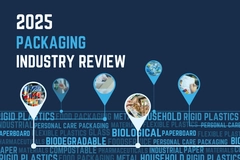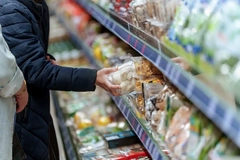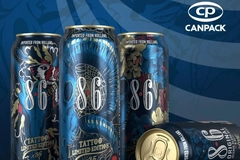HDPE Milk Bottle Recycling Rate Reaches All Time High of 76% according to Latest Industry Study
07 Nov 2011

Figures revealed in the latest annual recycling study from Recoup (RECycling Of Used Plastics Limited) show that 76% of natural HDPE milk bottles consumed and collected in the UK during 2010 were recycled – a steady rise on 2009’s figure of 72%, following the substantial jump from 57% in 2008.
Figures revealed in the latest annual recycling study from Recoup (RECycling Of Used Plastics Limited) show that 76% of natural HDPE milk bottles consumed and collected in the UK during 2010 were recycled – a steady rise on 2009’s figure of 72%, following the substantial jump from 57% in 2008.
The report, which identifies recycling rates of all plastic bottle types, revealed that a total of 281,000 tonnes of plastic bottles were collected for recycling in 2010, with HDPE milk bottles representing a third of this total, or 93,000 tonnes.
This continued annual rise can be attributed to the growth of kerbside collections, with 21.7 million UK households now having access to a plastic kerbside collection. An estimated 83% of all household plastic bottles are collected for recycling via this route.
Despite the sustained rise in the number of HDPE milk bottles being recycled, an estimated 22,700 tonnes of HDPE milk bottles were still landfilled in 2010. This material is expected to cost £1.8m in landfill costs, and has a potential recyclable sales value of £8m.
Despite the sustained rise in the number of HDPE milk bottles being recycled, an estimated 22,700 tonnes of HDPE milk bottles were still landfilled in 2010. This material is expected to cost £1.8m in landfill costs, and has a potential recyclable sales value of £8m.
James Crick, Business Development Director at Nampak, comments: “The latest data from Recoup’s UK Household Plastics Packaging Collection Survey 2011 makes for encouraging reading. Local authorities, industry and the wider public should be applauded for achieving an impressive 76% recycling rate for HDPE milk bottles. When you consider that there was virtually no recovery of this packaging waste stream as recently as 2002, progress has been considerable.
“From Nampak’s perspective, the increase in availability of recycled material will support our supply of high-quality recycled content HDPE bottles to our customers, helping us to play our part in achieving the Dairy Roadmap’s targets of 30% rHDPE by 2015 and 50% rHDPE by 2020.
“However, it is important that we, as a nation, don’t rest on our laurels. More than 20,000 tonnes of 100% recyclable plastic milk bottles ended up in landfill in 2010, which is simply unacceptable both from an environmental and a financial perspective. The government must encourage further investment in plastics recycling facilities and local authorities have a vital role to play in encouraging consumer participation in recycling schemes. Nampak is playing its part in educating the public through its educational based website.”
Nampak’s new lightweighted Infini® bottle, which was launched earlier this year, also makes a substantial contribution to carbon reduction and, combined with the higher recycling rates identified by Recoup, presents a highly positive overall picture. The new bottle has been specifically designed to be lightweighted and has significant benefits over the standard bottle design. In particular it offers an average 15% weight saving across the range with specific bottle sizes achieving savings as high as 21%.
This significant weight reduction and the associated reduction in materials needed to produce the Infini bottle will result in a saving of approximately 10,000 tonnes of material per year and will deliver a saving of 23,000 tonnes of carbon annually.
Source: Nampak
All content and features on this website are copyrighted with all rights reserved. The full details can be found in our privacy statement
Subscribe to our newsletters
By continuing to browse our site you agree to our Privacy Statement










